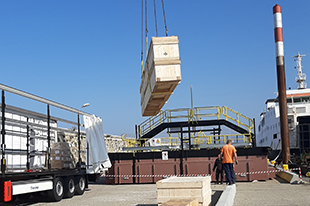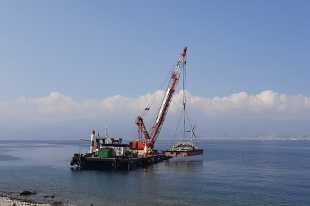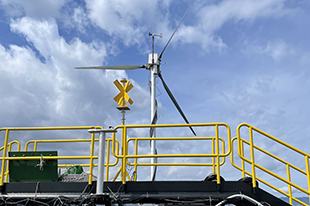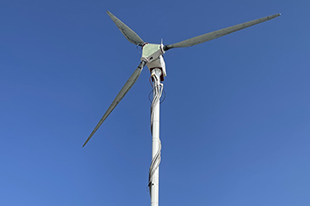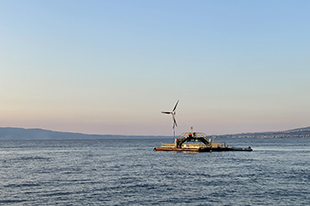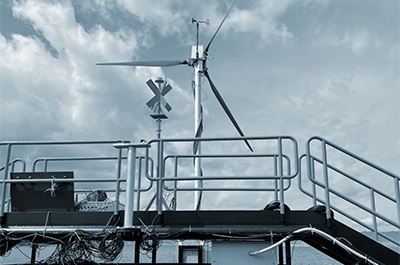
Since 2018 a group of researchers of the Department of Mechanical Engineering has been involved in the European project called “THE BLUE GROWTH FARM PROJECT”, founded by the Horizon 2020 Programme. The project revolves around creating a model of a multipurpose offshore platform scaled 1 to 15 for open-sea aquaculture and wind/wave energy production. The role of Politecnico was to design and build a scaled wind turbine to be installed on a floating platform as performing as a full scale generator and work under unpredictable environmental conditions. Over the past few months, the project reached almost its final stage: the platform was integrated with all technologies, the model launched, and the experimental campaign took off.
In the morning of February 26th, the turbine designed at POLIMI reached the harbour of Reggio Calabria to be installed on the platform, shipped from Ancona a few days right before. The platform is a fourteen-meter long and ten-meter wide rectangular steel caisson of the height of two meters and with a draft of 1.8. Inside there is a big basin communicating with the open sea designed to contain the nets for aquaculture. On one of the short sides of the caisson there is a row of wave energy converters meant to produce wave power in the full scale model. The eight-meter tall wind turbine, with a rotor diameter of seven meters , was assembled on the pier and, on the same day, the steel tower was fixed on the floater hull; afterwards, followed the integration of the electrical cabinet with the power supply, control and monitoring systems necessary to operate the wind power generator. Once assembled, the floating stability of the prototype got tested by putting it into the waters of the harbour of Reggio. After the testing, a crane barge transported the installation to the correct mooring site about sixty meters from the shore of Reggio Calabria in the waters supervised by the Natural Ocean Engineering Laboratory (NOEL) of the Mediterranea University of Reggio Calabria. On the 27th and 28th of February, the prototype was launched and was anchored to the seabed with four anchors.
Last April started the experimental campaign, which will provide crucial data to understand and improve offshore technologies to get sustainable resources from the oceans. Studying the dynamic behaviour of the floater is of particular interest, especially how wave energy harvesting and the operating wind turbine affect it. Moreover, it is also under evaluation the ability of the floater to reduce the wave motions inside the basin to allow fish farming.
Besides, the wind turbine is a unique model that might lead to improving the technologies linked to wind energy production on floaters. Firstly, it is interesting to evaluate the efficiency of the control logics with the objective to maximize the power of the energy harvested and reduce the dynamic loads affecting the prototype. Moreover, the sensors installed on the turbine allow continuous monitoring of both the loads acting on the rotor blades and tower and the level of the vibrations to which such machinery is exposed.

